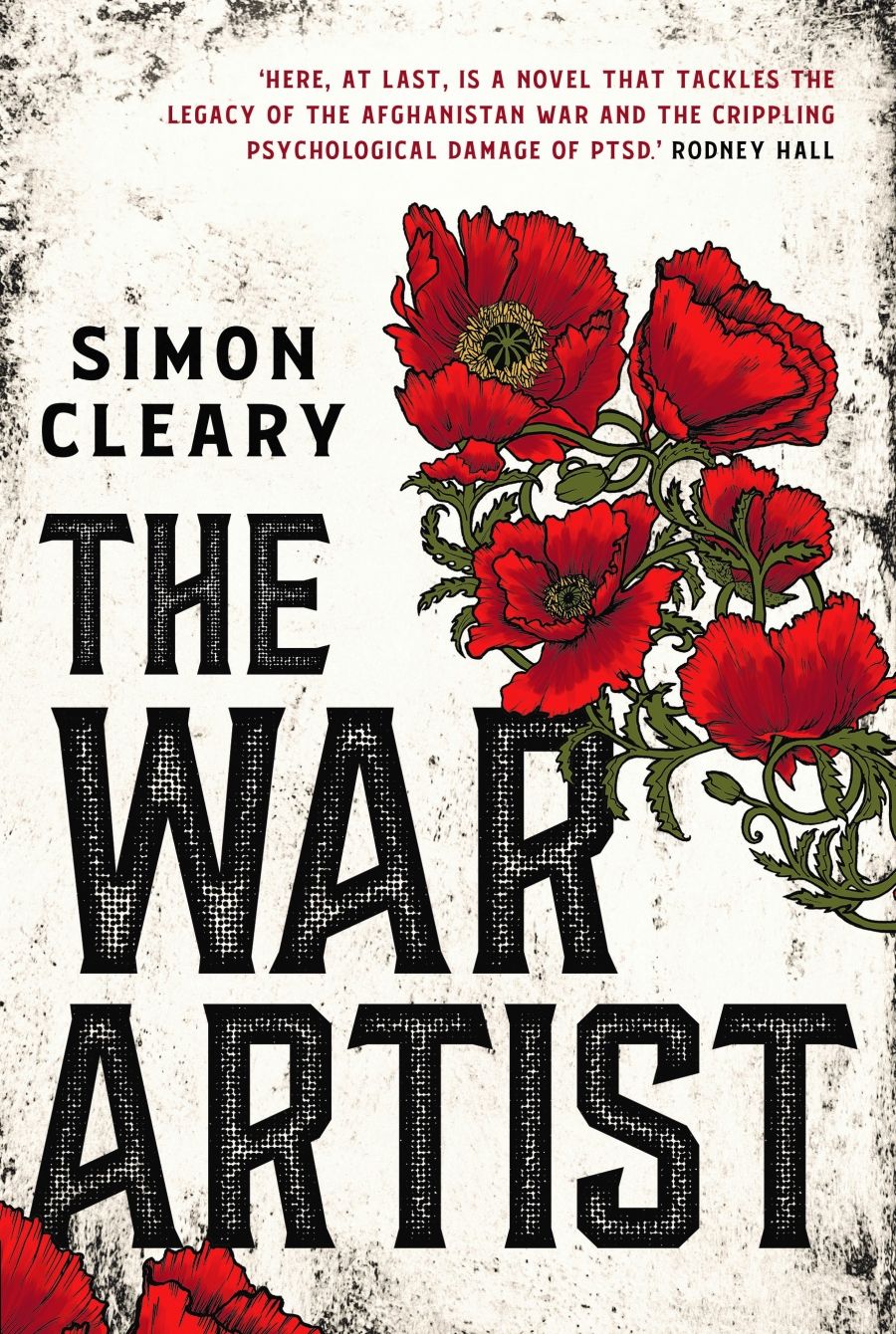
- Free Article: No
- Contents Category: Fiction
- Custom Article Title: Robin Gerster reviews <em>The War Artist</em> by Simon Cleary
- Review Article: Yes
- Online Only: No
- Custom Highlight Text:
It’s virtually axiomatic: ‘war can fuck you up’. This pithy observation, made by a veteran in The War Artist, Simon Cleary’s new novel about the travails of an Australian soldier during and after a tour of Afghanistan, goes to the heart of what we now understand about the impact of battle and its psychological aftershocks ...
- Book 1 Title: The War Artist
- Book 1 Biblio: University of Queensland Press, $29.95 pb, 304 pp, 9780702260346
But the corrosive psychological legacy of war has rarely been as graphically fictionalised as it is in The War Artist. The novel begins with Brigadier James Phelan flying back to Australia from Afghanistan, like a maimed Odysseus returning from the Trojan Wars (an impeccable reference point in the novel). He is accompanying the body of a soldier named Beckett, killed by the Taliban. Phelan had risen to a senior rank without having experienced much active combat. Aged fifty years, he yearned to prove himself, and thus ‘staunch’ his ‘hunger for respect’. Phelan had ill-advisedly decided to accompany a patrol to an isolated base in the Uruzgan badlands for a meeting with local elders. His presence is unnecessary, impelled by a personal need to show solidarity with men who can barely conceal their disdain for him. The unusual presence of a senior officer in the neighbourhood inspires a Taliban ambush, leading to the pointless death of Sapper Beckett, whose dying moments Phelan intimately observes.
Back in Australia, Phelan cannot escape Beckett, in part because he has his name inscribed on his shoulder on the day of his homecoming, in a studio in Sydney. He enjoys the briefest of flings with the tattooist, Kira, who reappears (with her young son) later in the novel, on the run from her threatening boyfriend, Flores. Shamed and guilty, Phelan returns to Brisbane to a troubled marriage to a woman named Penelope, as befits the wife of an antipodean Odysseus. A prolonged mental breakdown ensues, followed by a slow and incomplete rehabilitation towards the objective of ‘living honourably’, largely undertaken on a hobby farm in southern Queensland, to which he and his wife repair after his discharge from the army.
How can the war experience be described and inscribed? It is a question to which Cleary has evidently given some thought. In The War Artist he references Homer, Hemingway, and the British war poets, and he provides Phelan’s own thoughts on war poetry as a response to trauma. Perhaps the novel is too self-consciously ‘literary’ for its own good. Though ‘no war poet’, Phelan starts writing verse as a kind of therapy, and his poem ‘Waiting for Beckett’ is taken up by a local newspaper (the young soldier’s name happened to be Samuel).
Nonetheless, The War Artist provides a bracing retort to the self-deceptions of Australian military culture. Having escorted the body of Beckett home, Phelan goes through an exhausting official ritual of ‘ceremony and obligation’, articulating empty words like ‘honour’ and ‘sacrifice’ and ‘loyalty’ – the traditional patriotic shibboleths of war lampooned by generations of war writers, but which continue tenaciously to survive in the Australian public sphere. The press coverage of the event was equally specious. ‘Mateship and egalitarianism’ formed a theme, along with the idea that the Australian army is ‘different’ from all the others.
Traditional language failing to capture what it means to fight and die in a war, maybe other forms of inscription do the job rather better. After Kira reappears, she undertakes a painstaking process of tattooing Phelan’s back with initialled poppies, each denoting a comrade who died in (or because of) Afghanistan. This is both a tribute and a form of atonement. His back a ‘platoon of tattoos’, Phelan himself becomes a kind of living commemorative text. It is an inventive and utterly contemporary way of suggesting how modern warriors might proclaim to the world what they have endured.
Yet The War Artist is more than a book about military PTSD; in a way it is not even about war and soldiering at all. The novel also describes the stresses faced by civilians, including, and perhaps especially, women, on the battlefields of their own lives. Recovering from breast cancer, Penelope is facing a challenge of her own, and Kira has to deal with the vengeful Flores. In the novel’s denouement, these two strong female survivors stand together, ‘enfolding each other’. Clearly, bravery and indeed ‘mateship’ are not exclusively male virtues.
The War Artist is far from perfect. The writing at times succumbs to portentousness, and to this reader the action becomes increasingly implausible as the novel moves helter-skelter towards its melodramatic conclusion. Nevertheless, it is a daring and disarmingly entertaining venture into testing fictional terrain.



Comments powered by CComment